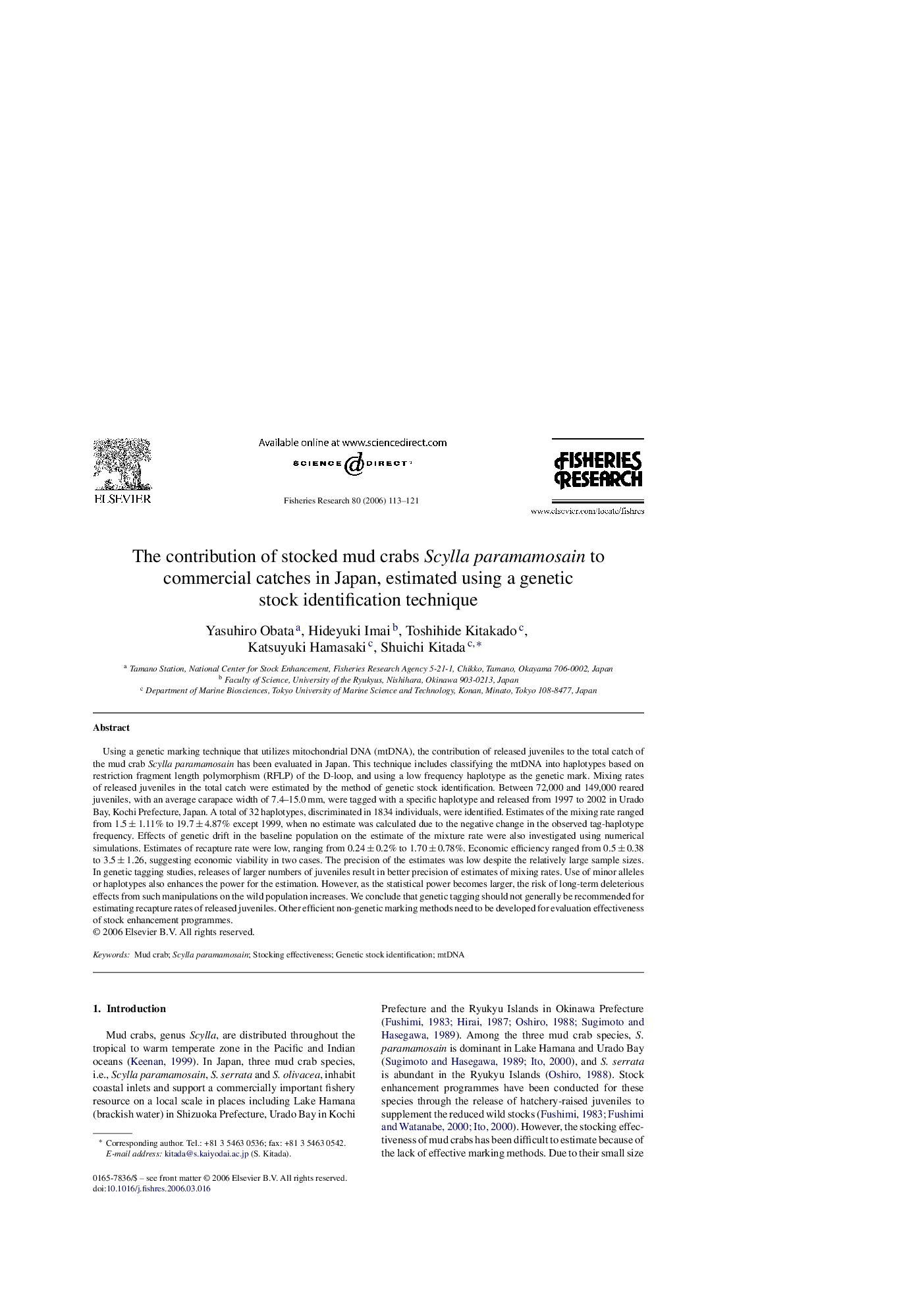| Article ID | Journal | Published Year | Pages | File Type |
|---|---|---|---|---|
| 4544959 | Fisheries Research | 2006 | 9 Pages |
Using a genetic marking technique that utilizes mitochondrial DNA (mtDNA), the contribution of released juveniles to the total catch of the mud crab Scylla paramamosain has been evaluated in Japan. This technique includes classifying the mtDNA into haplotypes based on restriction fragment length polymorphism (RFLP) of the D-loop, and using a low frequency haplotype as the genetic mark. Mixing rates of released juveniles in the total catch were estimated by the method of genetic stock identification. Between 72,000 and 149,000 reared juveniles, with an average carapace width of 7.4–15.0 mm, were tagged with a specific haplotype and released from 1997 to 2002 in Urado Bay, Kochi Prefecture, Japan. A total of 32 haplotypes, discriminated in 1834 individuals, were identified. Estimates of the mixing rate ranged from 1.5 ± 1.11% to 19.7 ± 4.87% except 1999, when no estimate was calculated due to the negative change in the observed tag-haplotype frequency. Effects of genetic drift in the baseline population on the estimate of the mixture rate were also investigated using numerical simulations. Estimates of recapture rate were low, ranging from 0.24 ± 0.2% to 1.70 ± 0.78%. Economic efficiency ranged from 0.5 ± 0.38 to 3.5 ± 1.26, suggesting economic viability in two cases. The precision of the estimates was low despite the relatively large sample sizes. In genetic tagging studies, releases of larger numbers of juveniles result in better precision of estimates of mixing rates. Use of minor alleles or haplotypes also enhances the power for the estimation. However, as the statistical power becomes larger, the risk of long-term deleterious effects from such manipulations on the wild population increases. We conclude that genetic tagging should not generally be recommended for estimating recapture rates of released juveniles. Other efficient non-genetic marking methods need to be developed for evaluation effectiveness of stock enhancement programmes.
